Effective Mosquito Control | DailyPest Solutions
Mosquitoes, those tiny but persistent insects, are a common part of our natural environment. They come in various species, with females being the notorious blood-suckers while males typically feed on nectar. Their life cycle includes four stages: eggs, larvae, pupae, and adults, with water serving as a crucial element in their development. While mosquitoes are a familiar annoyance during summer evenings, it’s important to remember that they can also transmit serious diseases like malaria, dengue, and Zika. Therefore, understanding these insects and taking appropriate preventive measures, such as using mosquito repellent and wearing protective clothing, is vital for staying safe and comfortable in mosquito-prone areas.
The different species of mosquitoes
The most common species of mosquitoes can vary by region, but globally, some of the most common and widespread mosquito species include:
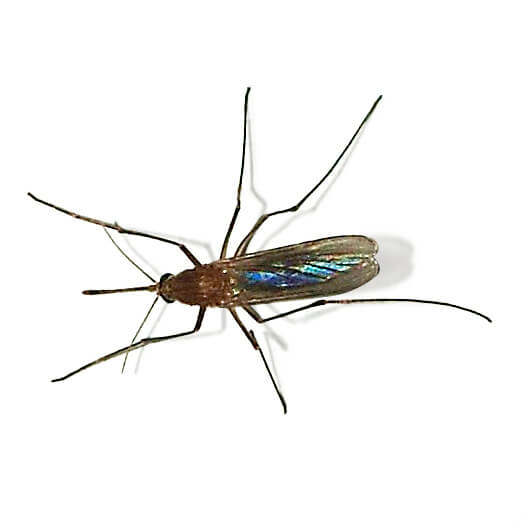
Culex pipiens
These mosquitoes are often referred to as the common house mosquito and are found in many parts of the world. They can transmit diseases like West Nile virus and are known for their presence in urban areas.
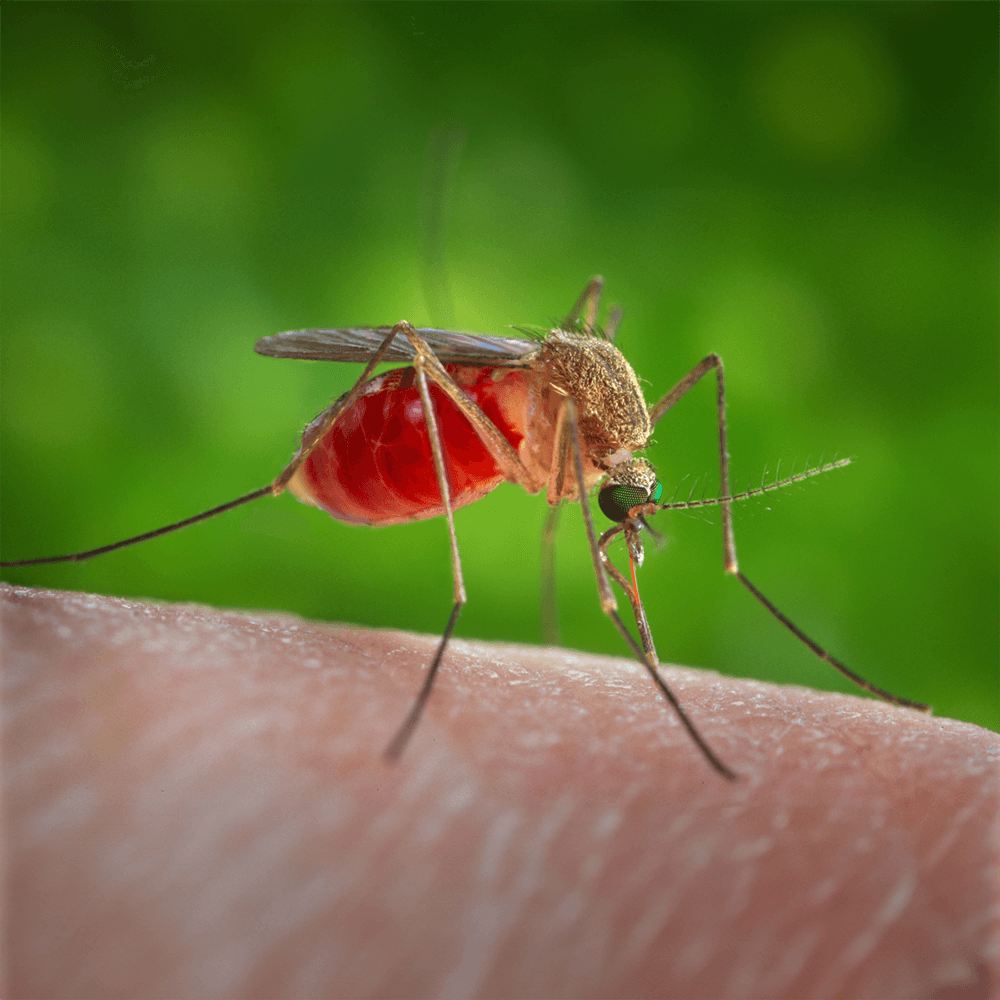
Culex quinquefasciatus
Also known as the southern house mosquito, these mosquitoes are found in warm, humid areas and can transmit diseases like West Nile virus and filariasis.
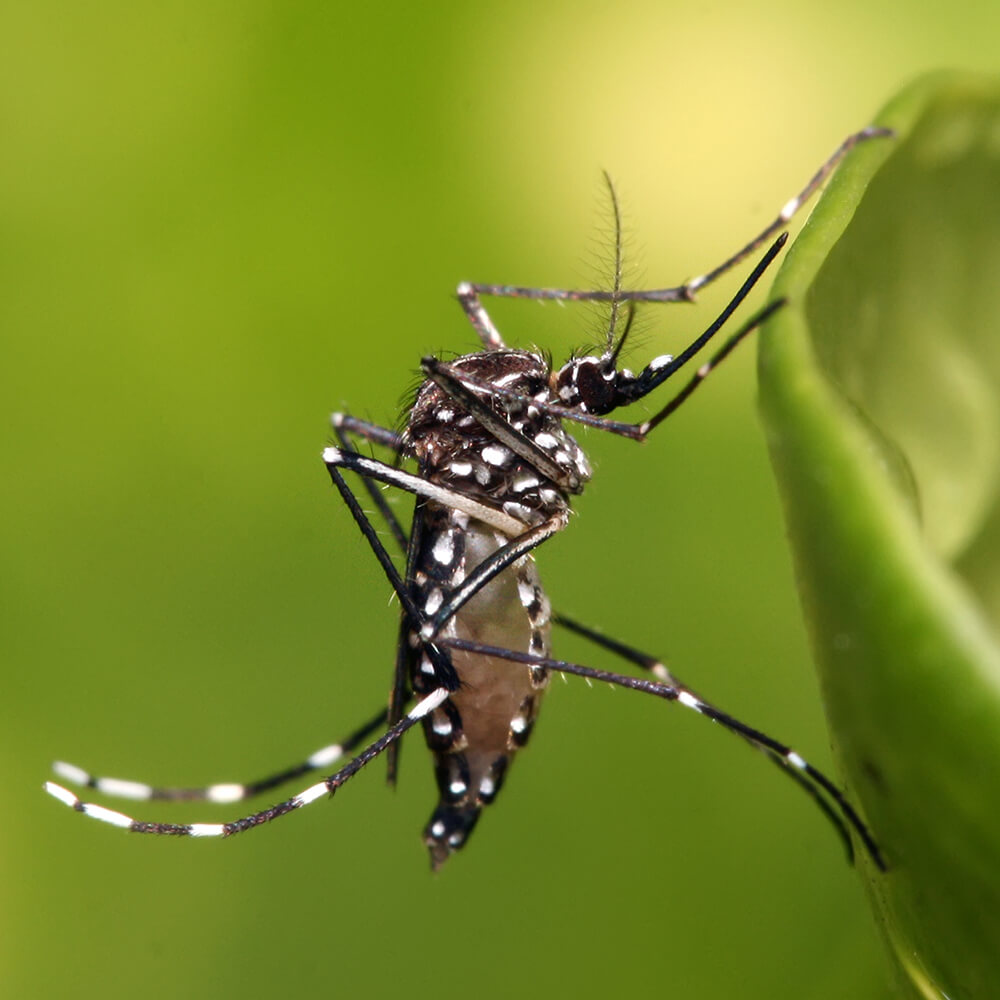
Aedes aegypti
These mosquitoes are responsible for transmitting diseases such as dengue fever, Zika virus, and yellow fever. They are particularly common in tropical and subtropical regions.
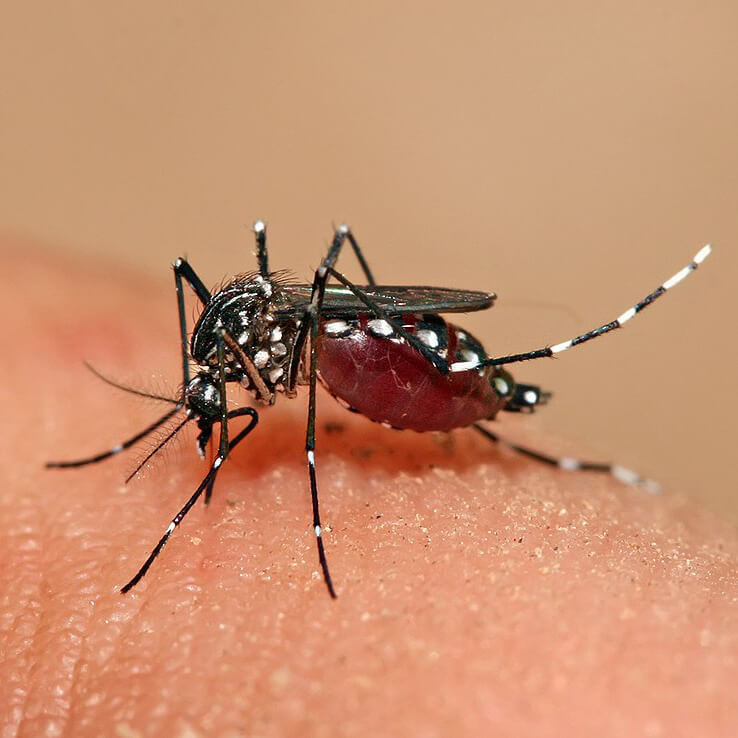
Aedes albopictus
Commonly known as the Asian tiger mosquito, they are known for their distinctive black and white striped appearance. They are found in many parts of the world and can transmit diseases like dengue and Zika virus.
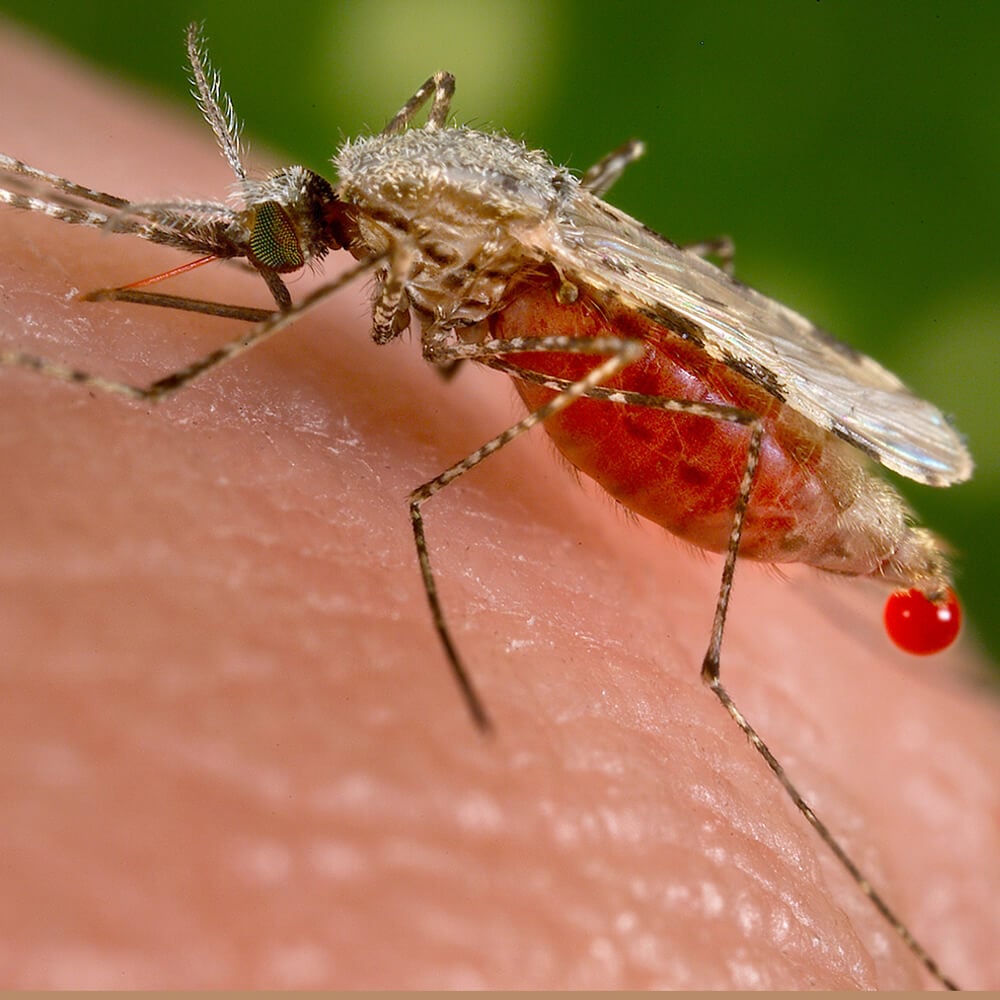
Anopheles mosquitoes
This genus includes several species that are important vectors of malaria. They are found in various parts of the world, particularly in regions where malaria is prevalent.

Culex tarsalis
These mosquitoes are prevalent in North America and are known to transmit West Nile virus.
Please note that the prevalence of specific mosquito species can vary depending on the geographical location and environmental conditions. Additionally, new species are continually being discovered and studied by entomologists and scientists.
There are over 3,500 species of mosquitoes worldwide, but not all of them feed on blood. Only female mosquitoes typically bite humans and animals for blood.
The life cycle of mosquitoes
Mosquitoes, those tiny yet persistent creatures, follow a fascinating life cycle that encompasses distinct stages of development.

Egg Stage
The life cycle of a mosquito commences with the female mosquito laying her eggs. Typically, these eggs are placed near water sources, where they can thrive. The presence of water is pivotal for the eggs to hatch and progress to the next stage.

Pupal Stage
Following the larval stage, mosquito larvae transform into pupae, commonly referred to as “tumblers.” During this phase, the pupae are inactive but highly mobile. They do not feed and instead focus on metamorphosis.

Larval Stage
Once the eggs make contact with water, they undergo hatching, giving rise to mosquito larvae, often known as “wrigglers.” These larvae are well-adapted to their aquatic environment, sporting specialized features for survival and growth. They feed on microorganisms and organic matter in the water.
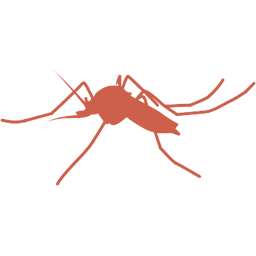
Adult Stage
After completing the pupal stage, adult mosquitoes emerge from the water. These fully developed mosquitoes are equipped with wings and specialized mouthparts. While male mosquitoes primarily feed on nectar and plant juices, females require blood for egg production.
Understanding the intricate life cycle of mosquitoes is essential for effective mosquito control and prevention strategies. By targeting specific stages of their development, we can mitigate the impact of these pesky insects on our lives.
Mosquitoes have relatively short lifespans, with some species living only a few weeks. Males usually live for about a week, while females can live for several weeks.
The seasons most conducive to mosquitoes
Mosquitoes, those persistent summertime nuisances, have a strong affinity for specific seasons. In this text, we’ll delve into the seasons most conducive to mosquitoes and provide insights on how to protect yourself during these peak mosquito periods.
Summer
Summer is the prime season for mosquitoes in many regions. The warm temperatures and increased humidity create ideal breeding conditions for these pesky insects. Mosquitoes are most active during the early morning and evening, making outdoor activities during these times particularly mosquito-prone.

Rainy Seasons
In regions with distinct wet and dry seasons, the onset of the rainy season often triggers an increase in mosquito populations. The standing water left behind by heavy rains serves as breeding grounds for mosquitoes.

Spring and Fall
While summer is the peak mosquito season, spring and fall also provide favorable conditions for their presence. In some areas, the arrival of spring and the cooling temperatures of fall can lead to a resurgence of mosquito activity.

Year-Round in Tropical Climates
In tropical climates, mosquitoes can thrive year-round due to consistently warm temperatures and ample rainfall. This means that residents and travelers in these areas should always be vigilant against mosquito-borne diseases.
To protect yourself from mosquitoes during these conducive seasons, consider using mosquito repellent, wearing long-sleeved clothing, and using mosquito nets, especially during peak mosquito activity times. These precautions can help minimize the discomfort and health risks associated with mosquito bites.
Mosquitoes can be found in various habitats, from rainforests to deserts, and even in urban areas. They require standing water for their larvae to develop.
Where do mosquitoes come from, their habitat
Mosquitoes are fascinating insects with a history dating back millions of years. Understanding where they come from and their preferred habitats is crucial in managing and mitigating their impact on our lives.
Evolutionary Origins
Mosquitoes belong to the Culicidae family, and their lineage can be traced back to the Cretaceous period, making them one of the oldest insects on Earth. These resilient creatures have adapted to various environments over millennia, making them highly adaptable and successful as a species.
Habitat Preferences
Mosquitoes thrive in diverse habitats around the world. However, their life cycle revolves around water, which is essential for their survival. Here’s a breakdown of their habitat preferences:

Breeding in Water
Female mosquitoes lay their eggs in or near water sources, ranging from stagnant puddles, ponds, and marshes to artificial containers like discarded tires or flowerpots. The presence of water is vital for their larvae to develop.

Temperature Sensitivity
Temperature plays a significant role in mosquito activity. Warmer temperatures promote faster development and increase mosquito activity, making summer the peak season for many mosquito species.

Varied Environments
Mosquitoes are incredibly versatile when it comes to their habitats. They can be found in urban areas, rural regions, forests, and wetlands, adapting to local conditions.

Climate Impact
Understanding the habitats and preferences of mosquitoes allows us to implement effective control measures, reduce breeding sites, and protect ourselves from their bites. By being informed about their origins and behavior, we can better coexist with these ancient insects.
Understanding the habitats and preferences of mosquitoes allows us to implement effective control measures, reduce breeding sites, and protect ourselves from their bites. By being informed about their origins and behavior, we can better coexist with these ancient insects.
Mosquitoes are highly attracted to the carbon dioxide we exhale when we breathe, making humans and animals easy targets.
What attracts mosquitoes
Mosquitoes, those persistent summertime buzzkills, often find their way indoors, leaving us wondering what draws them in. While these insects have complex sensory mechanisms, several factors can attract mosquitoes into our homes.
Carbon Dioxide (CO2)
Mosquitoes are highly sensitive to carbon dioxide, which we exhale when we breathe. They use this as a primary cue to locate hosts for a blood meal. So, simply by breathing, we unwittingly signal our presence to these insects.
Odor and Sweat
Mosquitoes are drawn to the scents we emit, particularly body odor and sweat. Certain compounds found in sweat, such as lactic acid and uric acid, are known to attract mosquitoes. Additionally, wearing scented lotions or perfumes can also make us more appealing to these insects.
Stagnant Water
Stagnant water sources inside or around your home provide ideal breeding grounds for mosquitoes. They lay their eggs in standing water, so eliminating these breeding sites can reduce their indoor presence.
Lights and Heat
Mosquitoes are also attracted to artificial lights and heat sources. Incandescent or halogen bulbs, as well as warm indoor temperatures, can draw them closer.
Body Heat
Mosquitoes are also attracted to body heat. As warm-blooded creatures, our bodies emit heat, making us more appealing to these cold-blooded insects. This combination of CO2 and body heat can make us easy targets, especially in the dark when mosquitoes are most active.
Dark Clothing
Mosquitoes are visually attracted to dark colors. If you’re wearing dark clothing, especially during the evening, you might become a more noticeable target.
Open Doors and Windows
Unscreened doors and windows provide easy access for mosquitoes to enter your home. Keeping screens in good repair can help keep them out.
Understanding what attracts mosquitoes into our homes allows us to take proactive measures to minimize their presence. By using mosquito repellent, installing screens, and eliminating standing water, we can reduce the chances of these pesky insects invading our indoor spaces.
Female mosquitoes have specialized mouthparts called proboscis that allow them to pierce the skin and feed on blood. They use their saliva to prevent blood from clotting while feeding.
Signs that you have a mosquitoes infestation
Mosquitoes, those persistent summer buzzkills, can quickly turn a peaceful evening into an itchy ordeal. Identifying signs of a mosquito infestation is essential for effective control. Here are some telltale signs that these pesky insects may have taken up residence in your vicinity:
Frequent Bites
An increase in mosquito bites, especially during daytime or evening hours, is a clear indication of their presence. If you notice multiple bites on your body or your family members, it’s time to investigate further.
Visible Mosquitoes
Spotting adult mosquitoes indoors, particularly during daylight hours, suggests an infestation. These insects often seek shelter in homes when not actively feeding.
Increased Mosquito Activity
A sudden surge in mosquito activity, especially during specific seasons or weather conditions, can be indicative of an infestation.
Larvae in Standing Water
Mosquitoes lay their eggs in standing water. If you spot wriggling mosquito larvae in puddles, containers, or stagnant water around your property, it’s a strong sign of breeding mosquitoes.
Indoor Breeding
Finding mosquito breeding sites indoors is a significant concern. Check for standing water in places like potted plants, drains, or even forgotten containers that might accumulate water.
Mosquito Attractants
Mosquitoes are drawn to sources of carbon dioxide, body heat, and scents. If you notice mosquitoes swarming around you or your family members when you’re outdoors, it’s a sign that you might have a mosquito problem.
Buzzing Sounds
The distinctive high-pitched buzzing sound of female mosquitoes can be a giveaway. If you hear this sound frequently indoors or near windows, it’s a sign that mosquitoes are trying to enter your home.
Presence of Mosquitoes in Your Yard
If you notice a high population of mosquitoes in your yard or garden, it’s likely that they will venture indoors as well.
Identifying these signs of a mosquito infestation early on can help you take the necessary steps to control their population. Implementing preventive measures like removing standing water, using mosquito repellents, and installing screens can significantly reduce mosquito activity and minimize the nuisance they pose.
In some parts of the world, mosquito populations can be staggering. For example, it’s estimated that there are about 100 trillion mosquitoes on Earth at any given time.
Rooms where mosquitoes hide
Mosquitoes can hide in various places, especially during the daytime when they are less active and looking for shelter. Here are some common rooms and areas where mosquitoes may hide:

Bedrooms
Mosquitoes often hide in bedrooms, especially in the corners of the room, under the bed, or in closets. They are attracted to the carbon dioxide and body heat emitted by sleeping humans.
Kitchens
Mosquitoes can be found in kitchens, especially if there’s standing water, spilled food, or open containers with sweet substances. Check around sinks, under the kitchen table, and near garbage bins.
Laundry Rooms
Mosquitoes may hide in laundry rooms, particularly near washing machines or dryer vents.
Bathrooms
Mosquitoes can hide in bathrooms, particularly in areas with moisture like behind the shower curtain, under the sink, or in the corners of the ceiling.
Basements
Dark and damp basements can be attractive to mosquitoes. They may hide in corners, cracks, or near basement windows.
Utility Rooms
Utility rooms, which often have plumbing and moisture sources, can also be hiding spots for mosquitoes.
Living Rooms
Mosquitoes may hide in living rooms, behind curtains, drapes, or in dark corners. They may also rest on furniture, such as sofas and chairs.
Garages
Mosquitoes may hide in garages, especially if there are open doors or windows. They might also rest on the walls or ceilings.
Porch or Patio Areas
If you have enclosed porch or patio areas, mosquitoes may hide in these spaces during the day.
To reduce mosquito hiding spots and prevent mosquito bites, it’s essential to eliminate sources of standing water, as mosquitoes lay their eggs in stagnant water. Additionally, using screens on doors and windows, using mosquito nets, and using insect repellent can help protect yourself from mosquito bites indoors and outdoors.
Mosquitoes are responsible for transmitting diseases such as malaria, which is caused by the Plasmodium parasite and kills hundreds of thousands of people each year.
The dangers and damages that mosquitoes can cause
Mosquitoes, those tiny insects that seem like mere nuisances, can pose significant dangers and cause considerable damages. Understanding these risks is crucial for safeguarding both our health and well-being. Here are the perils associated with mosquitoes:
Disease Transmission
Perhaps the most well-known danger, mosquitoes are infamous vectors of diseases. They transmit pathogens such as the malaria parasite, dengue virus, Zika virus, West Nile virus, and many others. These diseases can range from mild to life-threatening, affecting millions of people globally each year.
Discomfort and Sleep Disturbance
Mosquitoes are voracious biters, causing discomfort and sleep disturbance due to their relentless buzzing and biting. Their itchy bites can lead to poor sleep quality and daytime fatigue.
Agricultural Damage
Mosquitoes are not only a threat to humans but also to livestock and agricultural industries. They can transmit diseases to animals, affecting the health of livestock and reducing agricultural productivity.
Global Health Concerns
The spread of mosquito-borne diseases is not limited by borders. Mosquitoes can carry diseases across continents, making them a global health concern.
Psychological Impact
Repeated exposure to mosquito-borne diseases can have a psychological impact on affected communities, leading to fear and anxiety.
Allergic Reactions
Mosquito bites can trigger allergic reactions in some individuals. These reactions may lead to localized swelling, redness, and intense itching. In severe cases, anaphylaxis, a potentially life-threatening allergic response, can occur.
Economic Impact
Mosquito-borne diseases can have a significant economic impact on affected regions. They can lead to increased healthcare costs, decreased productivity, and even a decline in tourism.
Environmental Consequences
Efforts to control mosquito populations sometimes involve the use of pesticides and other chemicals, which can have adverse effects on the environment, including non-target species and aquatic ecosystems.
Long-Term Health Effects
Some mosquito-borne diseases, like Zika virus, can have long-term health effects, including birth defects in babies born to infected mothers.
While mosquitoes may appear insignificant, they pose a considerable threat to human health, the environment, and economies worldwide. Preventive measures, such as mosquito control, personal protection, and vaccination when available, are essential to mitigate these dangers and damages.
Mosquitoes are found on every continent except Antarctica. They have adapted to various climates and environments.
How to get rid of mosquitoes / Available treatments
Mosquitoes, those persistent summertime pests, can make outdoor activities unbearable and pose health risks due to the diseases they carry. Fortunately, there are several strategies and treatments available to help you get rid of mosquitoes and enjoy a mosquito-free environment.
Eliminate Breeding Sites
Mosquitoes lay their eggs in standing water, so one of the most effective ways to reduce their numbers is to eliminate breeding sites. Regularly empty and clean containers that collect water, such as flowerpots, buckets, and birdbaths. Ensure that gutters and drains are clear to prevent water from pooling.
Mosquito Repellents
Mosquito repellents, whether in spray, lotion, or wristband form, can help deter mosquitoes from biting. Look for products containing DEET, picaridin, or oil of lemon eucalyptus for effective protection.
Mosquito Spraying
Professional mosquito spraying services can treat outdoor areas to reduce mosquito populations. This is particularly useful for large yards or areas with a high mosquito presence.
Environmental Management
Consider environmentally friendly mosquito control methods, such as introducing mosquito-eating fish into ponds and using bacterial larvicides to target mosquito larvae in water sources.
Use Mosquito Nets
Mosquito nets, especially bed nets, provide a physical barrier between you and these insects while you sleep. They are an excellent option for protecting against mosquito bites indoors.
Citronella Candles and Torches
Citronella candles and torches emit a fragrance that mosquitoes find unpleasant. Placing them in outdoor areas can help create a mosquito-free zone.
Natural Predators
Encourage natural predators of mosquitoes, such as dragonflies and bats, to inhabit your area. These creatures feed on mosquitoes and can help control their populations.
Install Screens
Install screens on doors and windows to keep mosquitoes out of your home. Ensure that screens are in good repair to prevent any gaps or tears that mosquitoes could exploit.
Mosquito Traps
Mosquito traps use attractants to lure mosquitoes into a device where they are captured or killed. These can be effective for reducing mosquito populations in your yard.
Mosquito-Proof Your Home
Seal any gaps or cracks in your home’s exterior to prevent mosquitoes from entering. Repair broken screens promptly and use weather stripping to seal gaps around doors and windows.
By combining these strategies and treatments, you can effectively reduce mosquito populations and create a more comfortable, mosquito-free environment for yourself and your family.
Despite their annoying reputation, mosquitoes play a role in ecosystems as a food source for other animals like birds, bats, and some aquatic insects.
How to prevent mosquitoes infestations
Mosquitoes, those tiny but persistent insects, have a knack for invading our outdoor spaces and homes. Fortunately, there are proactive measures you can take to prevent mosquito infestations and minimize their presence.
Eliminate Standing Water
Mosquitoes breed in stagnant water, so regularly empty, clean, or cover containers that collect water around your home. This includes flowerpots, buckets, birdbaths, and clogged gutters.
Screen Doors and Windows
Install screens on doors and windows to keep mosquitoes out of your home. Check screens for holes or tears and repair or replace them as needed.
Apply Mosquito Repellent
Use mosquito repellents on exposed skin and clothing. Look for products containing DEET, picaridin, or oil of lemon eucalyptus for effective protection.
Consider Natural Predators
Encourage natural mosquito predators, such as dragonflies and birds, to inhabit your area. These creatures feed on mosquitoes and can help keep their populations in check.
Maintain Swimming Pools
If you have a swimming pool, ensure it’s properly maintained and chlorinated. Stagnant or poorly maintained pools can become breeding grounds for mosquitoes.
Use Mosquito Nets
When sleeping outdoors or in areas with a high mosquito presence, use mosquito nets. They provide an effective physical barrier against these insects.
Secure Doors and Windows
Seal gaps and cracks around doors and windows to prevent mosquitoes from entering your home. Weather stripping and caulking can help create a mosquito-proof barrier.
Mosquito-Repellent Plants
Plant mosquito-repelling herbs and flowers like citronella, lavender, and marigolds in your garden. These can act as natural deterrents.
Keep Your Yard Tidy
Trim overgrown vegetation and mow your lawn regularly. Mosquitoes often rest in tall grass and shrubs during the day, so maintaining a well-kept yard can reduce their hiding spots.
Wear Protective Clothing
Cover exposed skin by wearing long-sleeved shirts, long pants, and socks when spending time outdoors during peak mosquito activity hours, typically dawn and dusk.
Avoid Overwatering Plants
Overwatered lawns and gardens can create temporary breeding sites for mosquitoes. Water your plants adequately, and ensure there is proper drainage.
Professional Pest Control
If mosquito infestations persist, consider hiring a professional pest control service that specializes in mosquito management. They can provide targeted treatments to reduce mosquito populations.
By adopting these preventive measures, you can significantly reduce the likelihood of mosquito infestations and create a more comfortable, mosquito-free environment for yourself and your family.
Conclusion
In conclusion, mosquitoes are persistent and potentially dangerous insects that are drawn to several factors, including carbon dioxide (CO2), body heat, body odors, and dark clothing. Understanding what attracts them is the first step in effectively managing their presence.
To get rid of mosquitoes, it’s essential to eliminate breeding sites by removing standing water from around your home. Regular maintenance, such as cleaning gutters, flowerpots, and birdbaths, can significantly reduce mosquito populations. Additionally, mosquito traps, professional pest control services, and environmental management strategies can be effective in curbing mosquito infestations.
Preventing mosquito infestations is key to enjoying a mosquito-free environment. This involves installing screens on doors and windows, sealing gaps and cracks in your home, and using mosquito nets for protection while sleeping. Wearing protective clothing and applying mosquito repellents containing DEET, picaridin, or oil of lemon eucalyptus can help shield you from mosquito bites during outdoor activities. Furthermore, avoiding outdoor activities during peak mosquito hours, particularly at dawn and dusk, can reduce your risk of exposure.
By combining these strategies and staying informed about mosquito behavior, you can minimize the nuisance and health risks associated with mosquitoes, allowing you to enjoy the outdoors and your living spaces more comfortably.
